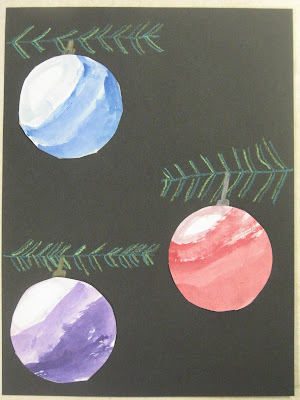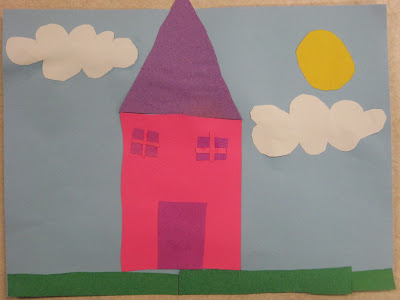I love teaching about color theory. In kindergarten, my students recently learned about primary and secondary colors. We began my making a gumball machine, based on Wayne Thiebaud's painting
Three Machines. The students traced a paint tray for the top part with pencil; then they traced over the pencil circle with a black crayon, and drew the bottom part of the machine with black crayon. I gave them a choice on their gumballs' price. Then, with watercolor sets, the students painted. I gave them 8-color Prang watercolor sets to assess if they could find the primaries. Most of the students really understood well, and used only the primary colors as I instructed.
Then, the students learned about the secondary colors. I showed Henri Matisse's The Purple Robe, and selected students to come up front and point to secondary colors they could find in the painting. Then, the students painted a flower vase, loosely based on the vase in the painting. The students mixed one color each day; first orange, then green, and lastly purple. Each day one part of the painting was completed, using this example as a guideline:
Here are a few of the students' finished pieces:
Throughout this unit, I used colored stars for assessments. I punches them with a die cut, painted them, had them laminated, and attached magnets to the back. Then, I would give each student in a row (my tables are in the three rows) a star, and they would go put it on the blackboard, either on the side labeled "primary" or the side labeled "secondary". Then, the next row would get a turn, etc. Due to a small kindergarten class this year, I have only 6 students per row in most classes. It works out perfectly!
Up next in my color unit is the importance of color, with Audubon cardinals. But, I'm not going to post pictures of this year's cardinals because I did last year, and you can see them
here.

















































